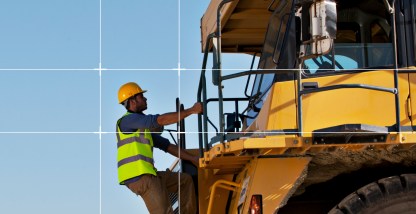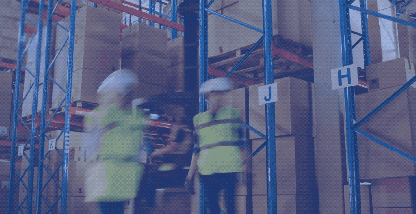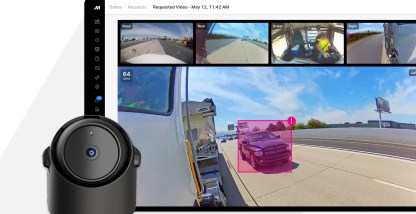In 2020, 18.1 million barrels of petroleum products per day were consumed in the United States, according to Freightwaves. While that may sound like a lot, it marks a 25-year low for petroleum consumption overall and a record 15 percent dip in petroleum consumption for the transportation sector itself. Even as petroleum consumption hit record lows in 2020, another more alarming trend was taking shape.
An eight percent rise in fatal collisions.
We’ve seen it a lot over the last year-and-a-half — drivers shouting, tailgating, speeding. It turns out these actions have consequences — fatal ones.
Preliminary data released this spring from the National Safety Council show that in 2020, for the first time since 2007, as many as 42,060 people died in motor vehicle collisions. The numbers mark a significant rise in the death rate during a year where the number of miles driven dropped 13 percent. If motor vehicle deaths can rise during a period where people are driving substantially less, it underscores the need for safer habits on U.S. roadways.
Through the first six months of 2021, the death rate climbed another three percent, showing that U.S. roads are becoming even more dangerous.
Everyone has a role to play in safety. And while safety managers can’t control the actions of others, they can instill in their own employees defensive driving skills to increase awareness, boost reaction time, and avoid collisions.
Safe outcomes are rooted in the values of a strong safety culture. With risk rising on roads throughout the country, there’s no time like the present to give your safety culture and fleet risk management program another look.
Here are six essential components to look for and foster in your own safety culture.
The company has a clear vision and knows how to execute it
It’s been said, “If you can see it, you can be it,” and the same could be said for achieving a stellar safety record. A safety culture built to last begins with a clear vision of what safe habits look like in every corner of the company. Once leadership can envision what it wants to accomplish, it can devise a step-by-step, collaborative approach for how to get there.
Establishing a compelling vision, setting realistic benchmarks, and rewarding exceptional performance can motivate employees in every segment of the business, from management and customer service to drivers and technicians. According to the Occupational Safety and Health Administration (OSHA), a strong safety culture also helps protect workers and enhance social responsibility. Once team members recognize the connection between safe work practices and improved outcomes, they will be more likely to buy into the corporate vision and adapt.
You use data to evaluate progress and continuously improve
Early adopters of safety technology have long used data in proactive ways. Those newer to the game can follow their lead. Companies that set the standard on safety use data to drive improvement and a strong bottom line. Not just sometimes. All the time.
While telematics is a valuable tool for transportation companies in every sector, when a collision, near-miss or false claim occurs, only video can tell the full story of what happened. Was your technician cut off? Was your driver distracted? Did an animal or child dart in front of the vehicle?
Motive’s new AI Dashcam answers pressing questions like these instantly whenever an unsafe driving event occurs. It does so with precision, alerting drivers of unsafe habits in real-time. With the help of an AI-powered safety platform, managers can quickly get to the truth of what happened, and more importantly, why it happened. In this way, the AI Dashcam can bring vital protection to your business and employees, exonerating workers when they aren’t at fault and pinpointing what went wrong when they are.
Companies with a strong safety culture know that by using video clips to coach employees to improve, they can foster continuous improvement within their ranks, reduce turnover, and retain high-performing employees well into the future.
Management takes the lead on safety
The best leaders lead by example, pure and simple. Business leaders at companies with a strong safety culture know that by offering a visual for others to follow, they can set the team up for safety success. Not just for now, but for years to come.
The best leaders on safety aren’t only safety professionals. They’re CEOs, operations managers, and human resources professionals as well. When senior managers such as these set the tone for others through safe habits of their own, employees at all levels of the business follow suit.
For example, when making the rounds from one jobsite to another, a landscaping supervisor can take care to don gloves and ear and eye protection when necessary, just as landscapers are required to do. Distribution executives visiting production facilities can handle and store food properly themselves. And an oil and gas manager visiting a jobsite can take care to wear protective gear.
When top managers show what safe habits look like through their own actions, employees understand what is expected of them — and they deliver.
Safety is synonymous with professionalism
Companies that lead on safety don’t wait for a collision before taking action. Instead, they take a proactive approach to safety, cultivating safe driving habits continuously to prevent collisions from happening. For for-hire carriers, it may mean that well-trained drivers are careful not to speed, cut people off, or follow too closely.
In the field services industry, professionalism may mean that landscapers tie their equipment down, ensuring it won’t fall off and injure others on the road. Or that pest control workers wear proper PPE when visiting a client’s home. While these may seem like small details, it can send a big message to customers and potential clients that your company has a reputation for following through on the details. And it’s the details that set you apart from the competition.
Everyone plays a role in safety
When employees buy into safety, companies reap the benefits through a stronger bottom line, boosted morale, increased productivity, and improved customer satisfaction.
For a safety culture to thrive, each employee should understand the unique contributions he or she can make to the safety mission. Then, they must own it. When managers work with teams to ensure that everyone understands what is expected of them, employees will be prepared for what’s coming and more receptive to changes.
Communication is clear, open, and effective
Communication and safety may seem like separate worlds, but they couldn’t be more closely linked. That’s because breakdowns in safety often result from breakdowns in communication. It’s one reason why safety organizations across the board, from nuclear regulators to OSHA, tout the role communication plays in a strong safety culture.
In construction and oil and gas, where heavy equipment, sensitive cargo, and heavy vehicles bring increased risk, communication becomes all the more vital to preventing injury.
How can managers get through to employees effectively? By reinforcing important safety messaging in weekly meetings, sending out weekly or monthly safety newsletters, and celebrating safety successes through reward and recognition. Checking these boxes will keep safety top of mind, build morale, and drive positive outcomes.
Learn more about Motive’s safety technology and how it can strengthen the safety culture at your organization.









